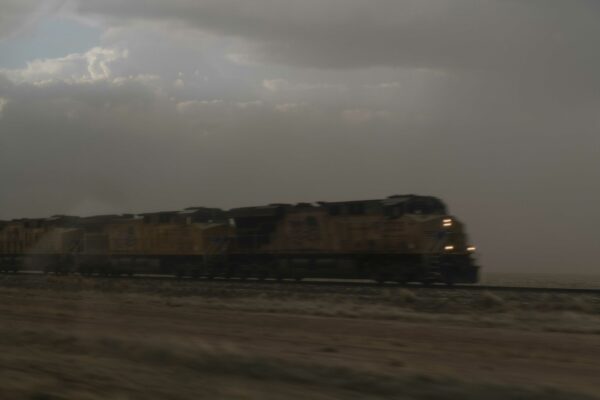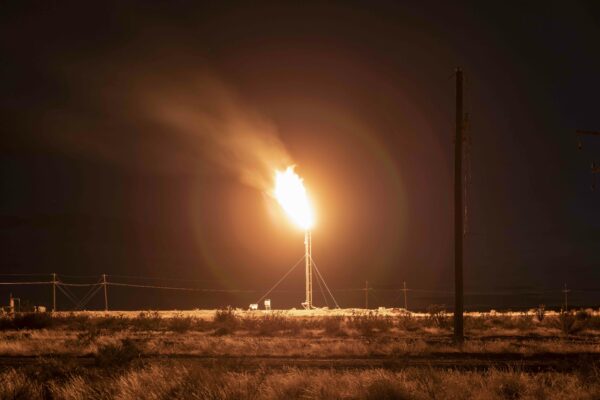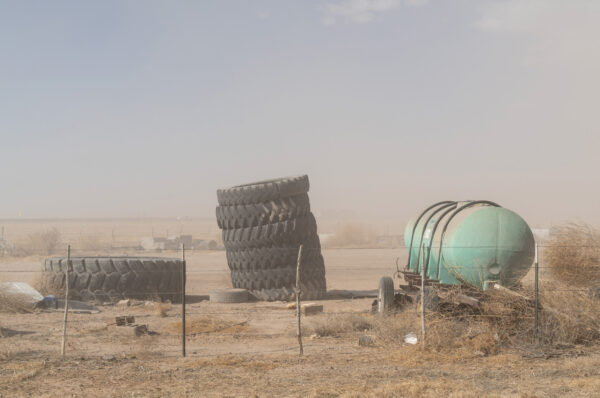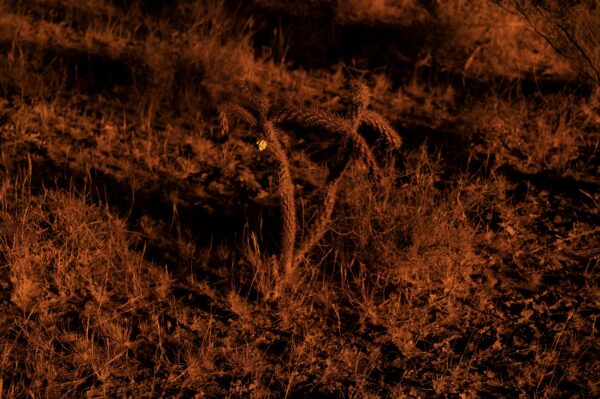Para leer este artículo en español, por favor vaya aquí. To read this article in Spanish, please go here.
This is act one, scenes i-viii, of a two-act narrative essay.
Photographs by Alex Boeschenstein.
THE FIRST RESORTS OF THE HELPLESS
The Panic of 1819 marked the first widespread, sustained financial crisis in the United States. This economic collapse motivated some Americans to emigrate to what is today Texas, then the state of Coahuila y Tejas in a newly independent Mexico. By 1824, hoping to establish a buffer zone from (the understandably) antagonistic Comanche bands to the north, the Mexican government was offering American immigrants cost-free, fertile land for growing cotton. And despite it being illegal in the rest of the country, Mexico permitted Americans to bring their slaves — with the stipulation that the practice would be phased out in the coming years.
Concurrently, a fiery period of Protestant reawakening ripped through Western New York State. Revivalist Protestants eschewed Catholicism’s top-down bureaucracy in favor of highly customizable, personalized salvation. And where Catholicism dourly prescribed poverty as a virtue, revivalists celebrated a prosperity theology, fomenting an aptly American Protestantism where wealth accumulation was the result of God’s divine will. So many boutique offshoots of Protestantism emerged that in the aftermath the region was nicknamed the burned-over district; as in, the fuel for the spiritual fire — the people — had all been converted.
Such post-panic spiritual mania makes sense. As Mark Fisher articulated in Capitalist Realism, in times of economic, political, and environmental crises, people feel “action is pointless; only senseless hope makes sense,” thus, “superstition and religion, the first resorts of the helpless, proliferate.”
Examples were legion. Outside of Palmyra, New York, in 1827, prophecy peddler Joseph Smith claimed the angel Moroni led him to discover gold plates in a forest, which he transcribed into the Book of Mormon. The burned-over district also birthed the Adventists — or Millerites — followers of baptist preacher William Miller, who predicted the imminent Second Coming of Christ. Several of Miller’s vague calendar windows for the advent came and went, but these disconfirmations only strengthened the Millerites’ resolve to evangelize and recruit. By the time a specific date was finally predicted — October 22, 1844 — their numbers had swelled to over one million. Again though, no advent. Then, in what’s known as the Great Disappointment, many Millerites defected. Others remained faithful, forming descendant groups like the Seventh-Day Adventists. More than a century later, a man called Benjamin Roden established an Adventist schism outside of Waco, Texas, that you’ve likely heard of: the Branch Davidians. More on them later.
ii. A TEXAS TRINITY
By 1836, Jesus Christ had revealed himself to Joseph Smith in Ohio. Meanwhile, in what is today central San Antonio, Texas, we are told, a band of fearless but exponentially outnumbered Texas patriots — led by William B Travis, James Bowie, and Davy Crockett, and guided by the moral imperative to protect freedom for all Texans — died heroically, defending the Alamo from the dictatorial Mexican President Antonio López de Santa Anna and his massive army. Famously, this selfless act bought Sam Houston time to rally troops for the Battle of San Jacinto, where the Texas army defeated Santa Anna, securing independence for the Republic of Texas.
Questioning this valorous creation story is, to certain generations of Texans, blasphemy.
Yet between 1824 and 1836, the Mexican government — including, after 1833, Santa Anna himself — granted American immigrants a staggering amount of leeway and good will. When Saltillo, the capital of Coahuila y Tejas, eventually pursued the agreed-upon monitoring and gradual dissolution of slavery in their state, the Americans — who didn’t want to have to actually work — pitched a treasonous fit. As contemporary scholars, historians, and activists have repeatedly pointed out: the Texas rebellion was, unequivocally, about slavery.
And the Alamo’s heroic Holy Trinity?
Travis was a syphilitic, inexperienced soldier who ignored repeated warnings that Santa Anna’s arrival was imminent, only to realize far too late what he’d gotten himself into. He drew no line in the sand and tried to formally surrender. Santa Anna rejected his plea. Bowie was a land fraudster, blackout drunk, and slave smuggler who didn’t even fight at the Alamo; he was confined to a sick bed the entire time. And Crockett was a failed politician and posturing woodsman who likely did not go down swinging, but surrendered.
Herein lies the fundamental cognitive dissonance central to what I’ll call mainstream Anglo-Texan identity politics. When presented with irrefutable, ample, and easily accessible evidence that disconfirms the state’s creation narrative, those for whom the mythology is an identitarian comfort act as the Millerites did when early advent dates came and went: they double-down.
iii. THE SEARCHERS
Forty miles east of Waco, near Groesbeck, Texas, sits a facsimile of Fort Parker, an early pioneer settlement where, in 1836, less than a month after the Battle of San Jacinto, a white girl called Cynthia Ann Parker was kidnapped during a Comanche raid. The Parker family, it bears mentioning, knew that they’d encroached into Comancheria; their fortified compound included twelve-foot walls and corner blockhouse defense structures — though they’d left the gate wide open the day of the raid. Cynthia Ann’s uncle, the belligerent John Parker, spent several years unsuccessfully searching Comancheria for her and other Parker family abductees.
Twenty-four years later, Texas Rangers captured Cynthia Ann and her daughter, Prairie Flower, during the Pease River Massacre. Against her will, Cynthia Ann was returned to her white family. Nineteenth-century Americans marveled at Cynthia Ann’s refusal to reintegrate, and obsessed over her consensual marriage to Comanche chieftain Peta Nocona. Further adding intrigue to Cynthia Ann’s story was her and Peta’s son, Quanah, who escaped Pease River and later led raids on white settlements for another decade. Eventually, Quanah surrendered to a reservation in Oklahoma, becoming an unlikely celebrity — the much-discussed Noble Savage — who counted President Theodore Roosevelt among his many white admirers.
Cynthia Ann’s saga inspired Alan Le May’s 1954 western novel The Searchers, as well as John Ford’s eponymous 1956 film adaptation starring John Wayne.
The Parker family narrative is inseparable from the contemporaneous Second Great Awakening in New York. Elder John Parker, the family patriarch killed during the 1836 raid, was a Predestinarian Baptist minister. This Hyper-Calvinist sect of Protestants espoused the “two-seed” theory of predestination, a sort of spiritual eugenics claiming that all persons are marked at birth as either good or bad seeds. The good seeds, coincidentally, seemed to all be white Protestants.
iv. AMERICAN PROGRESS
Predestination and entitlement were central to Manifest Destiny, the popular notion first articulated in 1845 that white Protestant Americans had divine right to this continent and all its natural resources — Indigenous populations be damned. John Gast’s famous painting American Progress (1872) offers a ham-fisted depiction of the concept. At the canvas’s western edge, Native peoples, darkened clouds, and bison are driven from the plains by sun-soaked technologies from the east, including telegraph infrastructures, stage coaches, agriculture, and railroads.
Manifest Destiny hybridized Europe’s colonial extraction model with the individualized salvation doctrines first introduced during the original Protestant Reformation of the 1500s. But Manifest Destiny’s true innovation was the injection of nineteenth-century prosperity theologies that had emerged in the burned-over district of Western New York. It wasn’t just the national project that deserved to expand and enrich itself, it was the individual actors. Those who prospered were chosen by God to become wealthy. Sinners were doomed to poverty. It was His will.
But to non-Anglo-Americans who follow Christ, whose story the New Testament relays, there is a cognitive dissonance between the idea of hoarding wealth and the virtues Christ preached.
Blessed are you who are poor, for yours is the kingdom of God. Blessed are you who hunger now, for you will be satisfied. Blessed are you who weep now, for you will laugh.
-Luke 6:20-21
How, then, do Americans square this circle?
v. I’M GOING TO BURY YOU UNDERGROUND, ELI
Paul Thomas Anderson’s 2007 film There Will Be Blood provides an instructive answer. Note: while Anderson’s narrative is set in Southern California, principal photography took place on ranchland outside Marfa, Texas; it is, therefore, a Texas film. There Will Be Blood centers a turn-of-the-twentieth-century ideological clash between a purloining capitalist — Daniel Day-Lewis’s Daniel Plainview, who wants to extract oil from the ground — and an impoverished preacher — Paul Dano’s Eli Sunday, under whose family’s land said oil sits. But this friction, we learn, is only pageantry when, in the final act, the messianic Sunday, who has become a radio preacher, visits the wet-brained Plainview’s mansion in a bid to sell out a neighboring farm for oil extraction.
Like Eli Sunday, it seems that Americans indulge prosperity theology’s conspicuous contradictions by employment of a nationalistic Hegelian dialectic.
Thesis:
America is a Christian nation, and Jesus condemned the exaltation of material wealth.
Antithesis:
America is a capitalist nation, and its animating principle is profit.
Synthesis:
Americans are God’s chosen people, and God has rewarded them with wealth.
Today’s billionaires are, publicly at least, secular; only right-wing zealots openly verbalize scripture anymore. Here then, Day-Lewis’s Plainview embodies the authentic atheistic prosperity gospel of post-industrial capitalism. Whether they suck up oil, personal data, or rare earth metals for electric vehicle batteries, extractive industries have always been godless.
Before Plainview snaps, bludgeoning Sunday, he patronizes him, as if berating a child — the same way the U.S. government and industrial capitalists continue to speak down to Indigenous populations. Plainview employs a juvenile (and thoroughly memed) analogy, explaining that he doesn’t need permission to capitalize on the landscape.
I drink your milkshake. I drink it up.
vi. PROSPERITY MINDSET
In 1954, an Oklahoman Pentacostalist radio preacher called Oral Roberts made the game-changing leap to television with Your Faith is Power, introducing millions of white Americans basking in the postwar economic boom to a modernized prosperity gospel. Their suburban homes, big cars, and ballooning savings accounts, Roberts intimated, weren’t the result of Europe’s industrial collapse following World War II, or the midcentury urban marginalization of nonwhite Americans — they were predestined gifts from God.
Texas produced two televised messiahs in the 1980s: Kenneth Copeland — who’d studied under Roberts — and Robert Tilton. These small-screen preachers ascended amidst a tumultuous decade that began with the Iranian revolution and subsequent international oil crisis, followed by the 1981-82 U.S. economic collapse, and, as the decade ambled on, late Cold War scares, crack cocaine, and the HIV/AIDS epidemic. The 1980s were particularly tough in Texas. When the bottom fell out of Texas oil, the state’s financial infrastructure collapsed and unemployment hit 9%. Texas television audiences were desperate to turn their fortunes around. Copeland and Tilton capitalized on their economic fears, promising spiritual and financial returns on cash “vows” made to their ministries — all of which they pocketed, tax-free.
The charismatic self-mythologizing and manifesting-wealth mentality of the golden age of televangelism, which coincided with an era of extreme economic precarity, provided the spiritualism-meets-multi-level marketing framework not just for twenty-first-century grifters like Joel Osteen of Houston, Texas, but also today’s glut of wellness influencers, life coaches, crypto evangelists, QAnon con-artists, and New Age Christian YouTube cult leaders.
Because what happens in times of economic, political, and environmental crises? People feel “action is pointless; only senseless hope makes sense,” and, “superstition and religion, the first resorts of the helpless, proliferate.”
vii. RANCH APOCALYPSE
As televangelism caught fire in the early 1980s, a twenty-two-year-old Houston musician called Vernon Howell joined the Branch Davidians — the aforementioned apocalyptic offshoot of the Seventh-Day Adventists — at Mount Carmel, their compound outside of Waco. Through a bizarre but calculated series of events, Howell eventually assumed the role of prophet, took on multiple wives, and, in 1990, legally changed his name to David Koresh. Preparing for the End of Days, Koresh and the Branch Davidians stockpiled firearms. That’s not illegal in Texas, obviously, but law enforcement, itching to nail these weirdos for something, leaked rumors to the press that Koresh had taken child brides. Koresh entered the cultural consciousness on February 28, 1993, when the Federal Bureau of Alcohol, Tobacco, and Firearms — who do not have jurisdiction in child protection — staged a disastrous raid on Mount Carmel that left four ATF agents and six Brand Davidians dead. The FBI then took over the operation. Thus began a 51-day nationally televised standoff.
On April 19, 1993, with the approval of Attorney General Janet Reno and President Bill Clinton, the FBI, aware of the number of families inside, launched a military assault. At 6 am, tanks rammed the compound’s walls, pumping in teargas. They later fired war-grade tear gas grenades — which included pyrotechnic elements — into Mount Carmel. By noon, the building erupted in flames. The fire — which the federal government maintains was started by the Davidians — killed 76 church members, including 25 children, two pregnant women, and Koresh himself.
Texas Monthly quickly condemned Koresh’s stand as the “anti-Alamo.” Their lengthy editorial employed mind-boggling mental gymnastics, arguing that a fringe group of weirdo-religious families summarily massacred by federal government operatives were, by orders of magnitude, worse than mercenaries committing treason to keep Black people enslaved. Such a disavowal is ironic, considering Koresh practiced much of what mainstream Anglo-Texans preach: an unwavering evangelical faith, a penchant for automatic weapons, and antagonism towards federal authorities.
Perhaps Koresh was too concrete, representing the logical conclusion (as praxis) to evangelicals’ (theoretical) spiritual militancy. They were no doubt doubly scandalized by his libertine sexuality. What I suspect truly irked them was Koresh’s disinterest in material prosperity theologies. During what he believed to be literal End Times, Koresh was more concerned with becoming Christ than accumulating capital. And troublingly, as a native Texan, he displayed little to no reverence for the state’s mythologies. He was generating his own.
Why did federal law enforcement escalate Waco? As investigative journalist Dick J. Reavis, author of Ashes of Waco (1995), has pointed out, the ATF was juggling multiple lawsuits by agents alleging racial and gender discrimination and harassment, and upcoming budget reviews with a Democrat-led Congress were likely to be antagonistic. Cracking down on white fringe groups might play well. Simultaneously, the FBI was mired in a public relations nightmare after botching Ruby Ridge. A competent, tactical strike on Waco could have redeemed them. But why were there such professional film crews on-site? Essentially, the agencies were staging a big-budget episode of COPS, aiming to appear heroic and capable in a piece of propaganda for Congress, thereby securing beefed-up budgets.
viii. NEW MOUNT CARMEL
In May, I visited Mount Carmel. A handful of remaining adherents, the Branch, still live there. Inside their no-frills chapel, dizzying banners, tapestries, and photographs adorned the walls. One featured a pixelated Bill Clinton, giving the thumbs up, Photoshopped next to Jeffrey Epstein — a puzzling design choice, considering there exist photos of them together. Blocks of bold, all-caps text testified that in the years before 1993, in tunnels below Mount Carmel, the Clinton and Bush families had secretly manufactured firearms, processed cocaine, and — of course — operated a child sex dungeon. Koresh was planning to expose them. The Deep State murdered him in a coverup.
Clearly, there’s cognitive dissonance between this convoluted, Q-aligned yarn and the provable, documented events that incentivized federal overreach that resulted in scores of dead Davidians. But for today’s Branch, the 1993 Waco siege wasn’t the anti-Alamo, it was an uber-Alamo — a stand not just against an oppressive government, but against an unholy, Satanic cabal of adrenochrome-guzzling pedophiles. For powerless people, that’s a powerful narrative.
Superstition and religion, the first resorts of the helpless, proliferate.

















2 comments
This short history tells us almost everything we need to know.
Jackson Lears’ “Fables of Abundance” comes to mind.